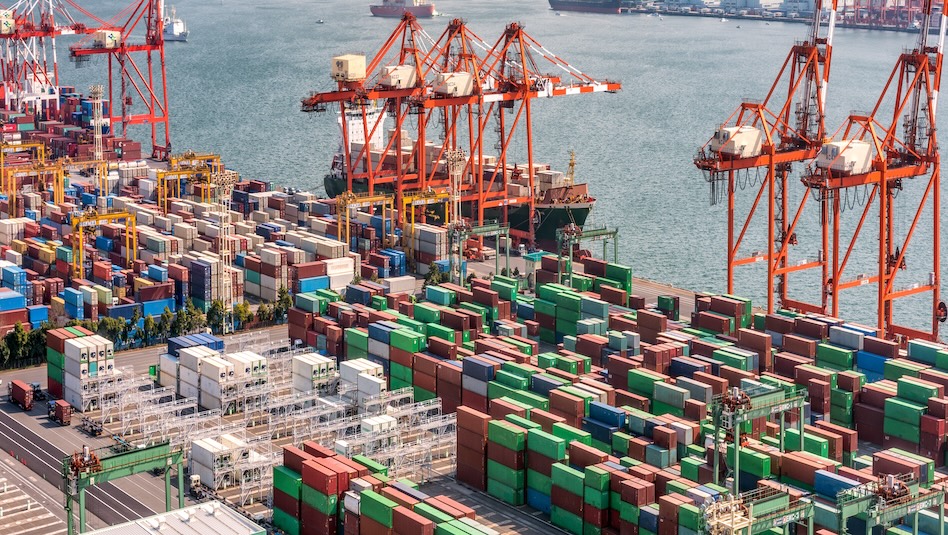




Monthly Economic Update: One for the road
 DOWNLOAD
DOWNLOAD

Inflation Update: Still low, still slow
 DOWNLOAD
DOWNLOAD

Philippines Trade Update: Exports momentum continues
 DOWNLOAD
DOWNLOAD


Philippine banks’ real estate exposure sinks to 6-year low

The exposure of Philippine banks and trust entities to the property sector dropped to a six-year low at the end of March, data from the Bangko Sentral ng Pilipinas (BSP) reported.
Banks’ real estate exposure ratio slipped to 19.41% as of end-March from 19.75% at end-December. It was also lower than 20.31% in the same period last year.
This was also the lowest real estate exposure ratio recorded in six years or since the 19.2% at end-March 2019.
The BSP monitors lenders’ exposure to the real estate industry as part of its mandate to maintain financial stability.
Investments and loans extended by Philippine banks and trust departments to the real estate sector rose by 7.76% to PHP 3.34 trillion as of March from PHP 3.1 trillion in the same period in 2024.
Broken down, real estate loans increased by 9.1% to PHP 2.97 trillion as of end-March from PHP 2.72 trillion at end-March 2024.
Residential real estate loans increased by an annual 11% to PHP 1.13 trillion, while commercial real estate loans also went up by an annual 7.96% to PHP 1.83 trillion.
Past due real estate loans stood at PHP 149.52 billion, higher by 9.3% from PHP 136.79 billion a year prior.
Broken down, past due residential real estate loans climbed by 14.74% to PHP 107.62 billion, while past due commercial real estate loans fell by 2.56% to PHP 41.9 billion.
Gross nonperforming real estate loans inched up by 0.44% to PHP 111.27 billion at end-March from PHP 110.79 billion a year ago.
This brought the gross nonperforming real estate loan ratio to 3.75% at end-March, lower than 4.07% a year earlier.
Meanwhile, real estate investments also dipped by 1.86% to PHP 372.4 billion as of end-March from PHP 379.45 billion in the same period a year ago.
Debt securities increased by 1.93% year on year to PHP 256.04 billion, while equity securities fell by 9.28% to PHP 116.36 billion.
Joey Roi H. Bondoc, director and head of research at Colliers Philippines attributed the banks’ lower exposure ratio in the first quarter to the drop in consumer demand for housing loans.
In a phone interview, Mr. Bondoc said there have been reports that homebuyers are backing out of their loans.
“Once it enters the bank financing, [the payment] balloons to, say, quadruple, quintuple times. That’s the problem,” he said, noting that some buyers may have been attracted by the low downpayment.
Rizal Commercial Banking Corp. Chief Economist Michael L. Ricafort said real estate developers may also be cautious in managing new supply after the exit of Philippine offshore gaming operators.
“Banks, real estate companies, investors, end-users also cautious on possible slower world and local economic conditions due to Trump’s higher tariffs/trade wars/other protectionist policies and geopolitical risks recently such as the Israel-Iran war,” Mr. Ricafort said.
Mr. Bondoc said he sees some “green shoots of recovery, but those are primarily outside of Metro Manila.”
“The horizontal house and lot projects are still good. But, again, the more expensive projects, say those in Metro Manila, including the condos, the take-up is definitely down,” he said.
Recent rate cuts by the BSP may not have been felt by consumers.
“We’ve seen these reductions already from the central bank since last year. But have we seen an impact, a positive impact, meaning reduced mortgage rates? Not yet. We have not seen that,” Mr. Bondoc said.
On Thursday, the BSP delivered a second straight 25-basis-point (bp) cut, bringing its policy rate to 5.25% amid a benign inflation outlook and slowing economic growth.
It has now reduced benchmark borrowing costs by 125 bps since it began its easing cycle in August last year.
“Our average rate, for example, five-year loans, still at 7.7%. When last year, it was 7.8%. There’s really no sizable, substantial correction or reduction in terms of these mortgage rates,” Mr. Bondoc said.
BSP Governor Eli M. Remolona, Jr. also signaled they could deliver one more 25-bp cut this year. — Aubrey Rose A. Inosante, Reporter
This article originally appeared on bworldonline.com





 By BusinessWorld
By BusinessWorld